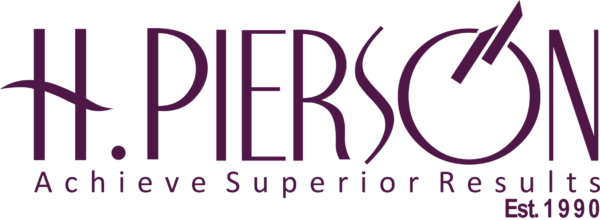AUTHOR: JOSHBERSIN In today’s skills-based economy, people want to learn faster than ever. More than $200 billion is now spent on various forms of workplace training and the volume of content is massive. There are tens of thousands of videos, courses, articles, and tools dedicated to helping people learn. And more and more of it is designed to be “in the flow of work,” so you can learn where you are, when you have time, and when you need the help.In this mad flurry to put more and more content online (YouTube now has 23 million channels and gathers more than 5 billion views per day), we seem to have left something out. The most powerful and memorable learning actually occurs when we talk with other people.
Take a look at the research done on the Ebbinghouse Forgetting Curve, which essentially shows how quickly we forget what we learn. When you study alone, you typically remember 28% of what you learned after two days. When you repeat the material, you remember 46%.
But when you use it, answer questions about it, and interact with others, you remember 69%. The reason? Actually conceptualizing, recalling, and using information is what creates the “memory pathways” that stick in your mind.
Why do you think we have homework assignments and work in groups in school? Why do teachers give lectures and then ask students questions to discuss in a group? It is a well-known fact that collaborative, cohort-based learning is the most valuable, useful, and memorable way to learn.
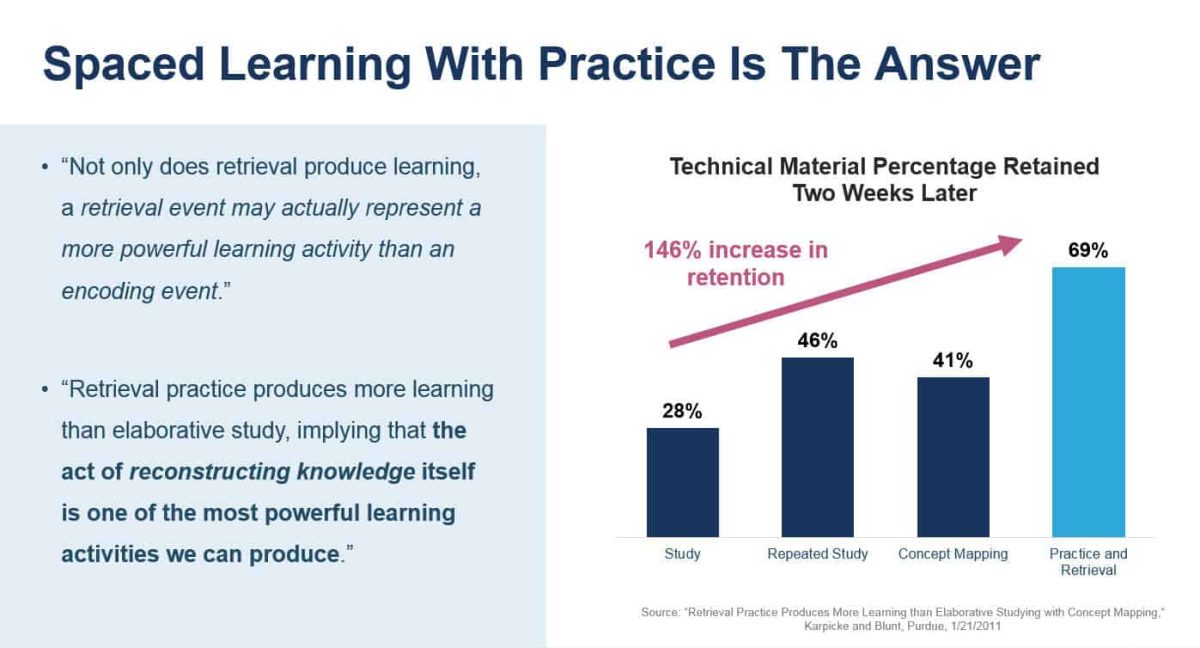
And we must remember that the “teacher” is always a vital part of the learning process. This person may be a subject-matter expert, a renowned researcher, a lecturer or instructor, or a course facilitator. Through the process of asking questions, providing advice, giving context, and explaining specific examples and solutions, the teacher “brings learning to life” for each individual in their own important way.
Learning Platforms: How This Has Been Lost
The learning technology market is a fast-moving, somewhat fad-driven space. Whenever a new technology is invented, L&D professionals rush to see how it could be used for learning.
As I like to remember, in the early 1980s when the first PC’s came to market, one of the sexiest ideas was to use them for training – so technologists hooked up laser disk players and developed video learning programs that cost hundreds of thousands of dollars to build.
Since then we have “experimented” with social interactions in many forms of learning, and I have to say most of them have been somewhat limited, unimaginative, and more or less “bolted on” to content. In other words, what we’ve been doing is building lots of self-study content which has “some collaborative features,” but mostly focused on comments by learners.
I recently participated in a large online masterclass which I authored through a series of videos. The students loved the content but the interactions were limited because we did not group people into small groups and did not use a platform that truly facilitated group learning. I’m here to help you figure out how to fix this.
(When done well the results can be amazing. Hive Learning, a provider which focuses on designed collaborative learning, has proven through A/B testing a 50% increase in retention through their environment when compared with traditional classroom training. Nomadic Learning, who I discuss below, regularly achieves over 90% completion rate regularly in their cohort-based programs.)
Since building a collaboration platform is expensive, most vendors have lashed together off the shelf tools. The market has essentially evolved as follows, and in many ways, this represents an industry-wide exploration and learning journey we’ve all gone through together.
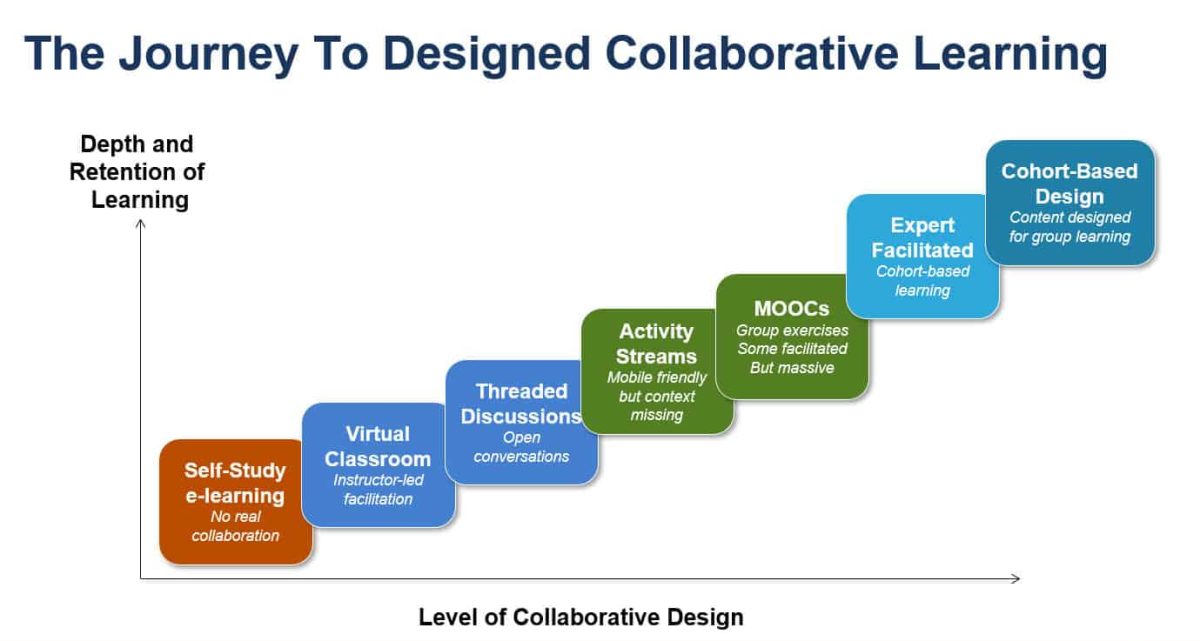
Learning platform vendors, of course, fall into various traps. They develop a platform that facilitates a certain type of activity (ie. The LXP vendors focus on the discovery of content, not the content experience itself), and then they sell their products as horizontal solutions. We as L&D and HR professionals have to buy these platforms and more or less “stitch them together” to build a total solution.
In particular, if you want to drive change, alignment, innovation, and relationships through your programs (as we do in the Josh Bersin Academy, for example), then you have to design your programs for group activity. And one could argue that this is also true for pure technical skills: coding academies and most technical certificate programs require group projects, design sessions, and “studios” that bring people together in small groups.
I know in my own career these group learning activities have been far more memorable in the long run, but that doesn’t mean “micro-learning” is also important. Group and cohort-based learning often fall into the “macro learning” space, while self-study and reading fall into the “micro-learning space.”
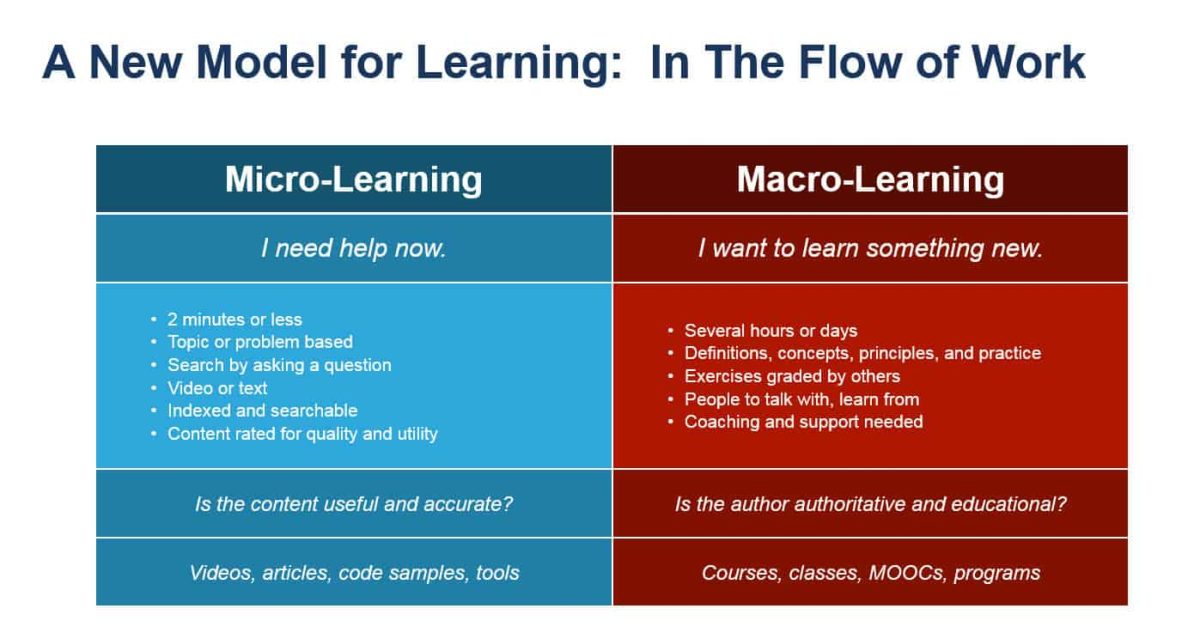
How Platforms Are Changing
As you consider all these issues, let me point out how learning platforms are starting to address this problem, and I’m going to talk primarily about two I know well: 360Learning and Nomadic Learning (the company I’m partnering with for the Josh Bersin Academy). There are many others (Intrepid, NovoEd, Hive Learning), and I will try to compare them briefly at the end of the article.
In the case of 360Learning, the company was founded six years ago by a passionate and brilliant engineer (Nick Hernandez) who realized that the most important learning that takes place is driven by an expert. Over the last decade, he has built an amazing platform that enables any expert in your company to “teach classes online” without the burden of “building complex content” or even hiring an instructional designer.
Underneath all the technology is a simple concept: a human (teacher, facilitator, expert) is at the foundation of great learning. And as 360Learning calls them, they are “learning champions.” (We are all learning champions at different times in our lives.)
In the early 2000s I wrote a lot about this idea, and we called it “SME-authored content.” (We called it “from e-learning to we-learning,” which was a cute idea.)
At that point in time products like Presedia, Breeze, Brainshark, Articulate, and other “Powerpoint to Flash” tools become hot, because they let people take their PowerPoint presentations and quickly turn them into instructional programs. Today many of these products are gone (or evolved), and we need a new system that facilitates this “expert-led” approach that is easy for experts to use.
I won’t get into great detail about how 360Learning does this, but it’s quite an amazing system and the company now has more than 500 large clients and is used by Safran Group (global aircraft engine manufacturer) where hundreds of experts teach others throughout the company.
Every single company needs a platform like this, and in my travels, I have never found a system that focuses so well on letting an expert (L&D or line leader) author content, share it, certify experts, and create an ongoing collaborative experience with employees. The company’s concept is “teaching experts to author and teach” in a highly scalable way.
I know this works because I’ve talked with some of their clients. Companies like Safran Group have almost 5% of the professionals authoring courses which are consumed by others. Imagine what this model could do to unlock expertise in your company.
Initially, the company positioned themselves as an LXP but they’re really much more. So position them into the “program management” category in my model and really are creating a new category for expert-authored, collaborative content. (LXP’s are primarily tools for content discovery and aggregation.)
When you think about the problem in this “human” way, you find new features become important. 360 Learning, for example, keeps track of all interactivity by learner and gives instructors lots of data about what content people are using, where they seem to need more help, and how “engaged” they are with the programs. This is exciting proprietary stuff, which really makes customers happy.
Nomadic Learning, the company I partner with for the Josh Bersin Academy, is even more interesting. Matt Burr and Tim Sarchet, the founders, built a business called “50 Lessons” which created video-based stories from the world’s greatest CEOs around the globe. (Similar to BigThink.) The videos were amazing (I watched many of them), but what Matt discovered is that nobody ever watched more than two videos in a row and most people stopped watching after 3-4 minutes. In other words, there was very little “depth of learning.”
The problem he discovered, which is even worse now, is that people just don’t have time to sit down and watch videos for an hour or more at a time. My research with LinkedIn shows that we waste almost a day a week on distracting emails and the biggest “challenge” people cite about their learning and career development is “I don’t have enough time.”
So Matt and Tim set out to build something new. I won’t give away the secrets, but the whole idea of Nomadic is to build a learning experience that “draws you in” and continuously gives you surprises, videos, exercises, ideas, and interactivity – in a way that makes it easy to stay engaged. Matt likes to call it “semi-synchronous,” because you can stop and restart at any time – but you do have a “time-bound” program to finish, so over a period of weeks you’re expected to stay on track.
In the case of Nomadic, the platform, content, and collaboration are integrated in a designed way. Since Nomadic is a custom content and video storytelling company, the programs feel like carefully designed integrated experiences, and you keep “wanting to come back” whenever you can. In the case of cohort-based learning, Nomadic has learned that by arranging people into small groups (20-50 people) the learning experience is personal, collaborative, and innovative. So the “programs” in the Josh Bersin Academy are designed to take place in groups, and each exercise brings people together in innovative and novel ways.
What I’ve experienced so far is that Nomadic’s platform (and 360 Learning’s platform) are much more than “learning” platforms. Just like face to face events, they bring people together, let people share their challenges and ideas, and create alignment toward strategic solutions. And Nomadic includes its own built-in LXP, so there are hundreds of curated resources available for micro-learning at any time. One of our clients, Medidata, is using the Josh Bersin Academy to drive their entire digital transformation. And this is the type of thing that 360 learning could do also.
What To Consider: Many Platforms Abound
There are many learning platforms and content providers on the market, and they are built by smart, innovative entrepreneurs. My point in this article is not to try to cover them all, but rather help you think through the importance of “group-based learning” and make sure you focus your energies on “what is being used for macro learning” and “what is being used for micro-learning” as you build your solution.
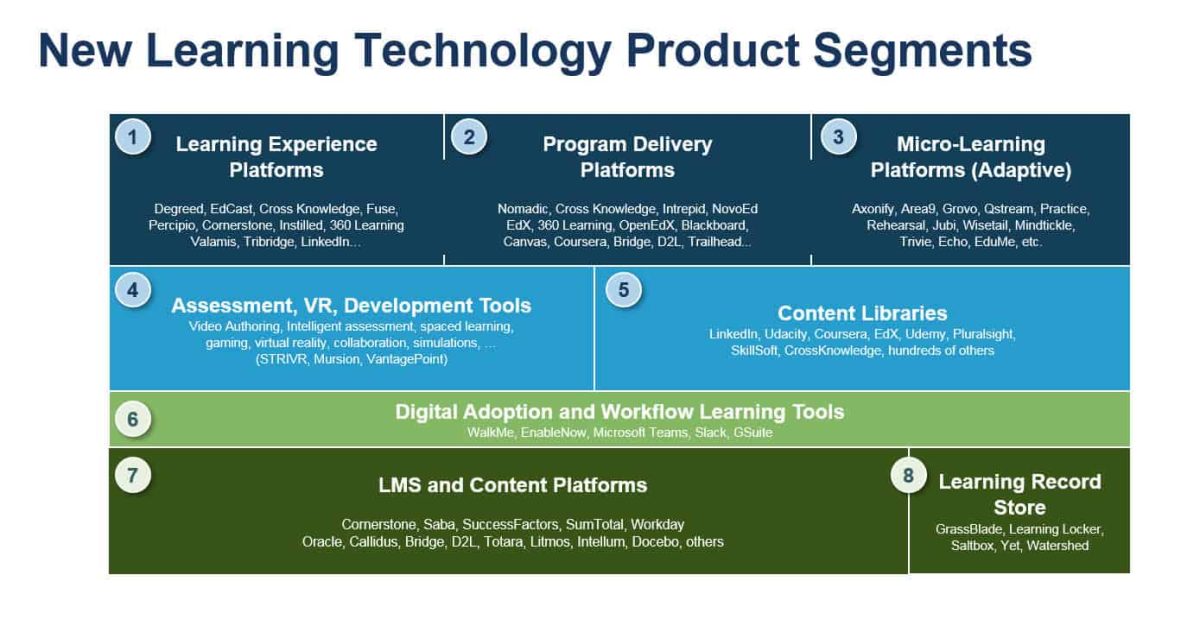
Remember To Focus On Culture
Finally, let me mention the importance of building a learning culture. Regardless of your efforts to build great content and hire the best instructors, the culture of learning always prevails.
Do people have time to learn? Do they feel a sense of empowerment and belonging in the program? Does the experience “meet them where they are?” And is there an expert, teacher, or facilitator to make sure employees can really get what he or she needs as they push themselves to the next level?
Nothing creates a learning culture more than groups of people activated to learn together.
New ideas, conversations, and talking about solutions create memorable skills we all carry for a lifetime. As you select your tools and build your strategy, make sure the focus on human supported, group-based learning remains at the core. You’ll be glad you did.
Source:
